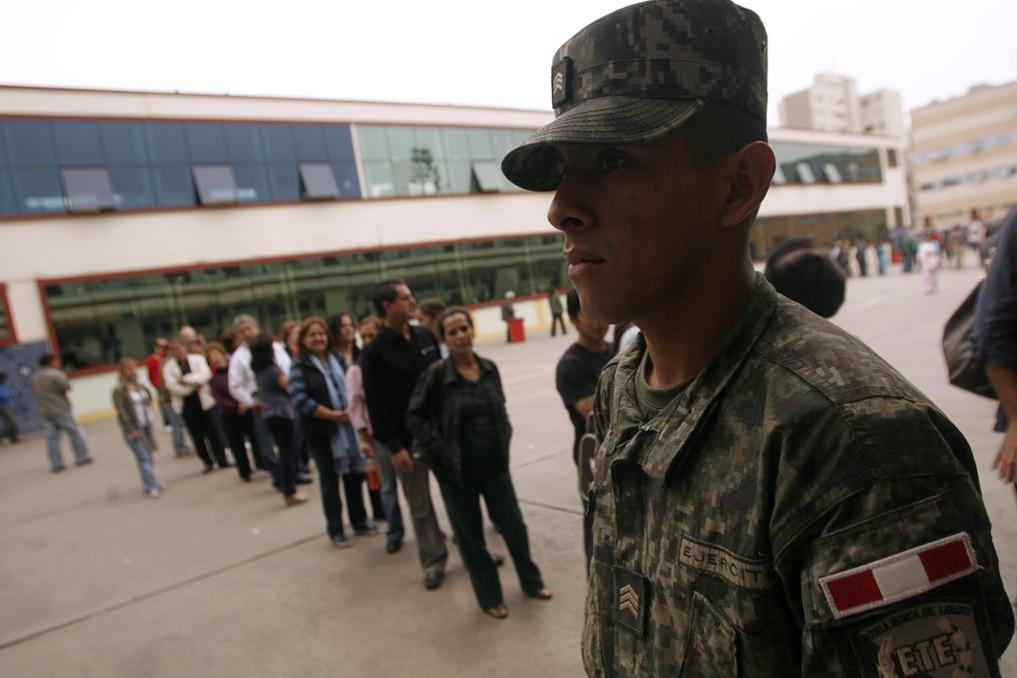Did Peru commandos execute hostage-takers?
Peruvians have tried to move beyond their nation’s troubled past.
LIMA, Peru — It was the photo that defined a presidency; Alberto Fujimori stepping over the corpses of Marxist terrorists following a daring commando raid that freed 71 hostages from a four-month ordeal.
But now Operation Chavin de Huantar — the raid was named after a famous pre-Incan archaeological site — is coming under renewed scrutiny over the alleged extrajudicial executions of three of the terrorists.
Last week, the Inter-American Court of Human Rights announced that it had referred the case to its sister court over Peru’s repeated failure to investigate the alleged murders of the trio, Eduardo Nicolas Cruz Sanchez, Herma Luz Melendez Cueva and Victor Salomon Peceros Pedraza, allegedly after the commandos had subdued them.
Read more: Proposed gold mine roils locals
“The three executed persons were under the custody of State agents and, at the time, of their execution, did not represent a threat for their captors,” the Commission said in a statement.
It also named four suspects in the killings; Vladimiro Montesinos, the jailed Machiavellian former adviser to President Fujimori, as well as two retired army colonels and the former chief of Peru’s armed forces. They are alleged to have orchestrated the killings.
Chavin de Huantar was a wildly popular highpoint of Fujimori’s turbulent presidency and the commandos who carried out the raid are regarded in Peru as some of the nation’s greatest heroes.
The raid ended a four-month long siege of the official residency of the Japanese ambassador in Lima, after 14 terrorists from the Tupac Amaru Revolutionary Movement (MRTA by its Spanish initials) burst into a Christmas party there on December 17, 1996.
The residence was quickly surrounded by police and soldiers but the MRTA remained blockaded inside along with 72 hostages, many of them high-level Peruvian officials, including Francisco Tudela, the foreign minister at the time.
Read more: An Amazonian trip, no luggage required
International TV crews quickly set up camp around the residence and the world watched with baited breath as the Fujimori administration attempted to negotiate with the terrorists.
Finally, on April 22, 1997, the government’s patience ran out and President Fujimori ordered the hostages’ rescue by force. All but one of the hostages escaped, all 14 MRTA members were killed and Chavin de Huantar went down as one of the most spectacularly successful counter-terrorism operations in history.
Now, even with Fujimori serving a 25-year jail term for directing death squads and embezzlement, there is little appetite in Peru, deeply scarred by numerous leftwing terrorist atrocities in the 1980s and 1990s, to try the commandos.
Acknowledging that reality, the Inter-American Commission on Human Rights, was at pains to underline how Chavin de Huantar’s goals were legitimate, noting that it was “cognizant that the individuals under the MRTA’s control were at constant risk of their lives and personal integrity.”
One campaigner, lawyer Gloria Cano, of human rights group APRODEH, accused Montesinos and the two colonels of hiding behind the commandos after the three men’s lawyers demanded that individual soldiers be called to testify before the Inter-American Court on Human Rights.
